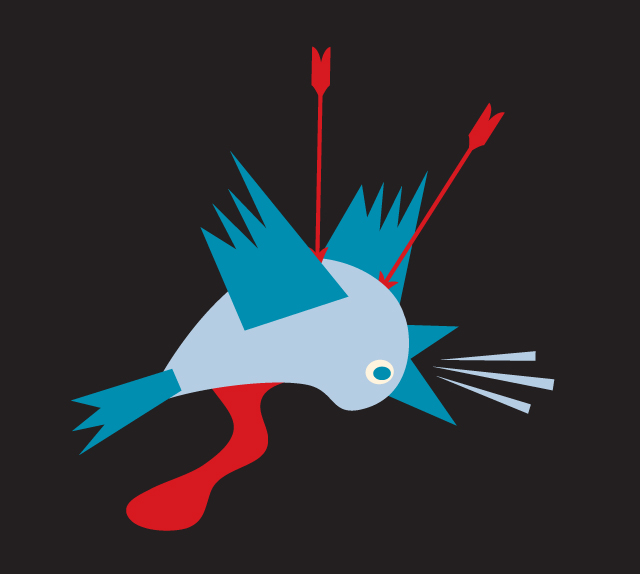Save 50% on a 3-month Digiday+ membership. Ends Dec 5.

![]() This is the second story of a series examining how marketers are building the socially connected brand. It is brought to you by Turn, the cloud marketing platform that transforms the way leading advertising agencies and marketers make decisions.
This is the second story of a series examining how marketers are building the socially connected brand. It is brought to you by Turn, the cloud marketing platform that transforms the way leading advertising agencies and marketers make decisions.
In January 2011, Alabama law firm Beasley Allen filed a class action suit against Taco Bell, claiming the fast-food Mexican eatery was falsely advertising its meat as seasoned beef when instead it contained “substances other than beef.”
It turns out that the claim had no merit. But before the suit was dropped, Taco Bell aggressively responded, using social media as the primary means to combat the allegation. Greg Creed, Taco Bell’s president, took to Youtube with a minute-and-a-half video explaining that the company actually does use real beef mixed in with other ingredients. The company also turned to Facebook and Twitter, refuting each of the lawsuit’s claims. And it seemed to work. Not only was the lawsuit dropped, but company’s deft use of social media helped it keep its fans – and even win a few new ones.
For brands like Taco Bell, crisis lurks around every corner. It can come in the form of mechanical malfunction, like Carnival Cruise’s poop ship fiasco. Or it can be the result of human error or stupidity, like when a Kitchenaid employee posted a bizarre and inappropriate tweet about President Obama from the brand’s Twitter handle. Because these types of incidents are media catnip, brands need to have a plan for when a situation arises. And in today’s hyperactive world, that plan places social media at the center.
A study done by Wave Metrix, an analysis firm, found that 91 percent and 89 percent of consumers positively viewed Taco Bell’s statements on Facebook and Youtube, respectively. While the company did have a traditional PR campaign incorporating the staid press release, social was at the heart of the crisis response.
What Taco Bell did correctly was respond in the social space honestly, authentically and timely, according to Erich Marx, Nissan’s director of interactive and social media marketing. “You can’t hide anything in social, and brands that try to hide or evade in social will be called out sooner or later,” Marx said.
When a crisis hits, Dan Webber, Edelman D.C.’s head of digital crisis, said the first thing he does is to get an understanding of not only what’s happening on the ground but also what’s being discussed on social channels. Once a brand sees what types of conversations are popping up on Youtube, Twitter or Facebook, the crisis team can use that to inform the response strategy.
Motrin learned this hard way. In September 2008, the pain reliever manufacturer put out a video ad that suggested that new mothers who carry their babies in slings and other wearable pouches are prone to backaches. The Internet got mad. Twitter rallied around the hashtag #MotrinMoms to express anger and frustration with Motrin’s tone-deaf message.
Because this occurred over a weekend when the brand and agency weren’t paying attention, the animosity only festered. The company eventually commented, three days later, with a canned response, angering people all over again.
“Even if it’s 40 minutes later and you put out a tweet ‘We’re aware this issue is happening; working to figure out, and check back here,’ you’re not taking responsibility but at least responding to what you’re seeing online,” Webber said.
Brands in crisis ought to also consider directing people to a dark site, a section of a brand’s website that’s not public-facing but ready for when a crisis happens, according to Matt Browher, svp of digital strategy at Ketchum. When a crisis hits, the brand flips its dark site live with messages ready to go.
“The whole point of crisis management is to get it over with and minimize as much as possible,” Browher said. “You don’t want to be called in crisis and need to communicate with people and have some Web developer take a few days to get it. You need to be ready to go and swap content out.”
But beyond simply broadcasting their message, brands need to focus on active engagement with their customers. Edelman’s Webber once worked with a brand where an issue popped up, and he and the brand’s community manager stayed up for 48 hours, responding to every question on Facebook. Because that brand was so aggressive in engaging and transparent, Webber said, the issue only lasted four-to-five days instead of two-to-three months.
“Brands that do a good job use channels to engage that community,” Webber said. “They shouldn’t respond to everyone but go through and look for objective questions where people are looking for an answer.”
Image via Shutterstock
More in Marketing

Ulta, Best Buy and Adidas dominate AI holiday shopping mentions
The brands that are seeing the biggest boost from this shift in consumer behavior are some of the biggest retailers.

U.K. retailer Boots leads brand efforts to invest in ad creative’s data layer
For media dollars to make an impact, brands need ad creative that actually hits. More CMOs are investing in pre- and post-flight measurement.

‘AI is permeating everything we do’: How Guitar Center developed 2 AI tools this year
This summer, the company launched a chatbot called Rig Advisor to help customers find the right instruments and products.
Ad position: web_bfu